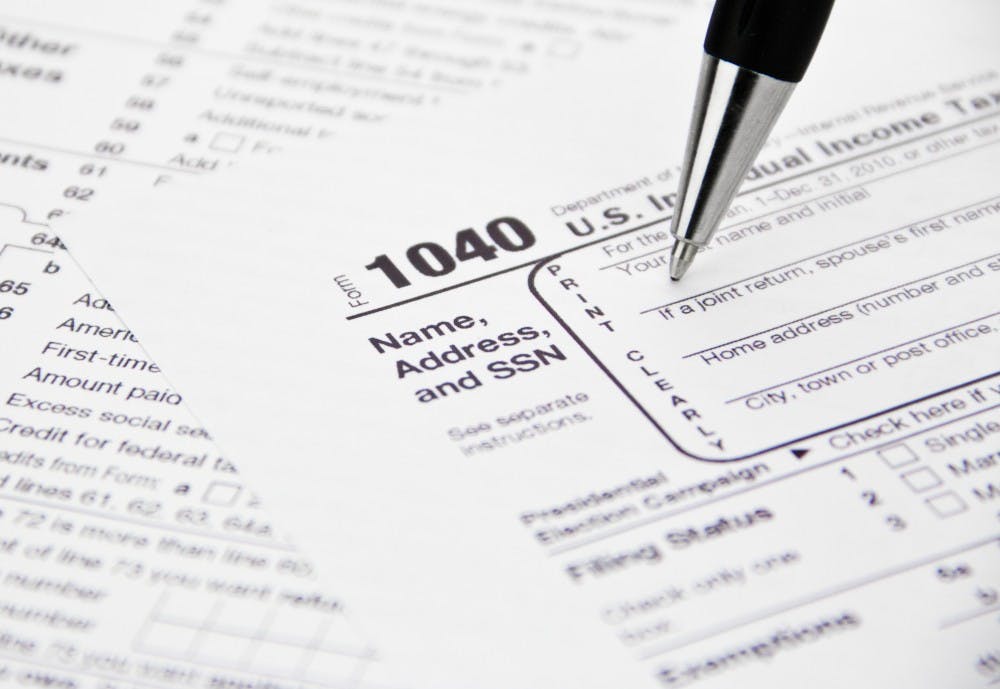Tips for Choosing a Reputable Tax Preparer
Learn how much the preparer will charge before your return is prepared.Avoid preparers who base their fees on a percentage of the amount of your refund or claim they can obtain larger refunds than other preparers.Ensure the tax preparer provides you a copy of your return to keep for your records.Never use a tax preparer who asks you to sign a blank tax form.Choose a tax preparer who will be around to answer questions after tax season.Make sure the tax preparer has a preparer tax identification number (PTIN) and belongs to a professional organization, such as the Indiana CPA Society or the Indiana Society of Enrolled Agents.Ask the tax preparer about the security measures he or she takes to protect taxpayer data. Is your tax information kept in locked containers? Is data encrypted on computers used to file your tax returns? How are documents that include your personal information destroyed?File Your Federal and Indiana Tax Returns for Free Nearly two-thirds of Indiana taxpayers qualify to file their federal and state taxes online for free using Indiana freefile (INfreefile). Benefits to filing electronically include:Faster refunds – E-filed returns are processed in 12-14 days, while a paper return can take up to 12 weeks to process.More secure – Fewer people see e-filed returns, making this option more secure.Fewer errors – E-filed returns have a two percent error rate, compared to a 20 percent error rate for paper-filed returns.More convenient – Sophisticated, question-and-answer style software makes it easy to file your federal and state taxes at the same time.Visit www.freefile.dor.in.gov to compare vendor offers and get started.
Source: Indiana Department of Revenue
Money. Numbers. Forms.
Mastering the art of tax filing can be daunting to the uninitiated. While most college students don’t have to, those with jobs will want to consider filing for income tax returns. And for anyone who isn’t a dependent under their parents, getting acquainted with Internal Revenue Service (IRS) requirements is the best bet.
For those unsure about how to do taxes – or if they need to file them at all – here’s a guide to reporting what you’ve earned and (hopefully) getting back the much-wanted tax return check.
1. Who files taxes?
Before giving yourself a headache over IRS rules and expectations, one expert said you should determine if you have to report your income at all.
Eric Bertram, a tax representative at H&R Block, said first-time filers need to see if they received enough income for the tax year to trigger the filing requirement in the first place.
“This amount required for actually filing taxes is determined by the person’s filing status, age and dependency status,” Bertram said.
Filing doesn't have to be complicated for newcomers. Because most first-timers are dependent-free and not bogged down with various claims, Bertram said they're eligible to use the IRS’s Form 1040EZ. Single and married filers may use a two-page document if they meet all of the seven requirements detailed on the back of the one-sheet form. Among those requirements: Your taxable income must be less than $100,000.
Regardless of whether or not you are required to file, you may want to do so, because if your employer has been withholding taxes, you may be owed a tax refund.
2. Why file taxes in the first place?
The law states that a dependent student who earned an income less than $6,300 in the tax year does not have to pay taxes. In most cases, anyone making over this amount must file, by law.
"If a student doesn’t have to file a tax return, not filing would still be a mistake if any income taxes were withheld on paychecks,” Bertram said.
It’s important to remember that a dependent can only claim their income on their own tax return.
According to the IRS, a dependent must be either a “qualifying child” or a “qualifying relative” who meets certain conditions, such as age requirements, income, or full-time student status. Dependents cannot claim any exemptions when filing their own taxes, even if their parents do not claim them either. Because most college-aged students fall into the dependent category, students cannot claim their own exemption.
All taxpayers who are claimed as a dependent on someone's tax return are subject to different IRS filing requirements, regardless of whether they are children or adults. Since a dependent is unable to claim their own exemption, a tax return is necessary when their earned income is more than the standard deduction for a single taxpayer.
3. What is needed to file taxes?
- W-2 with earnings from the previous year
- A 1099-INT available online from your bank if you've earned enough in interest to have to report it
- Your student loans will send you a 1098-E form, usually by email, showing your reportable amount of interest that you have paid over the year (this can get you more of a refund)
- Any investment accounts or retirement accounts not through your workplace (if you have a 401k through work, it will be reported on your W2 for you) will send you a 1099 form, whether it is a 1099-DIV or a 1099-INT
4. What forms do I need to fill out?
An important first step in filing taxes is obtaining your W-2 form, which is your proof of employment at a company or organization. If you held multiple jobs over the past year, make sure to obtain your W-2 from each of your employers. The company you worked for will typically send you the form by Jan. 31, but contact them if you do not receive it by then. The W-2 form is not something you fill out. It is usually referred to as a W-2, but is also officially known as a "Wage and Tax Statement."
The W-4 is a tax form used to evaluate an employee’s personal tax situation and calculate the correct amount of federal income tax that should be withheld from his/her pay. This form must be completed whenever an employee starts a new job or experiences change in his/her personal or financial situation and is required for all employees except for those who earn less than $800 per year. Recently, the IRS has created an online withholding calculator for the purpose of improving accuracy.
On your W-4 form, you will need to claim a number of withholding allowances. Employee-claimed exemptions are used to determine how much of an employee’s pay to subtract from his or her paycheck to send to the tax authorities. The more allowances you claim, the less income tax will be withheld from your paycheck. The fewer allowances you claim, the more income tax will be withheld from each paycheck.
The IRS provides a rough formula for how many allowances taxpayers should claim to have the correct amount withheld from each paycheck.
Form 1040, also known as a "U.S. Individual Income Tax Return," is what you file for personal (individual) federal income tax returns filed with the IRS by US residents.
5. How long does it take?
The deadline to file a tax return is April 15, but it’s important to begin the process well in advance.
Starting early will give you time to gather the right tax documents and get the necessary advice from your parents or paid tax professionals, Bertram said.
“Don’t wait until the last minute,” he said. “The sooner you begin, the more time you have to correct any mistakes or seek professional assistance - and the faster you can get a tax refund back.”
6. How do I get a tax refund?
If you have federal taxes withheld from your paycheck, the only way you can receive a refund when excessive amounts are withheld is if you file a tax return. If you’re a single taxpayer who earns $2,500 during the year with $300 withheld for federal tax, then you are entitled to a refund for the entire $300 since you earned less than the standard deduction plus one exemption.
The IRS does not automatically issue refunds without a tax return being filed.
7. Does filing taxes cost money?
College students, like everyone, are eligible to use the IRS tax filing software at no cost—as long as the annual income is less than $58,000.
“There are a lot of places people, especially students, can go to have professionals file their taxes for them,” Bertram said. “It’s good to do research first, though, because tax scams can be really messy. Asking your parents about what to do and where to go will most likely direct you in the right direction.”
To best avoid any potential scams, he advises students to file their taxes electronically using the official IRS website.
8. Who can get tax deductions?
If you’re going to school — and you’re paying for it — you can opt for certain deductions when filing your tax return.
The IRS sets out specific guidelines for tuition and student loan deductions, but you should consider whether you are filing as a dependent under your parents – as such deductions would have to be filed on their taxes, instead.
A deduction reduces the amount of tax taken out of your paychecks, and education deductions can save you as much as $4,000.
|
Tips for Choosing a Reputable Tax Preparer • Learn how much the preparer will charge before your return is prepared. • Avoid preparers who base their fees on a percentage of the amount of your refund or claim they can obtain larger refunds than other preparers. • Ensure the tax preparer provides you a copy of your return to keep for your records. • Never use a tax preparer who asks you to sign a blank tax form. • Choose a tax preparer who will be around to answer questions after tax season. • Make sure the tax preparer has a preparer tax identification number (PTIN) and belongs to a professional organization, such as the Indiana CPA Society or the Indiana Society of Enrolled Agents. • Ask the tax preparer about the security measures he or she takes to protect taxpayer data. Is your tax information kept in locked containers? Is data encrypted on computers used to file your tax returns? How are documents that include your personal information destroyed? File Your Federal and Indiana Tax Returns for Free Nearly two-thirds of Indiana taxpayers qualify to file their federal and state taxes online for free using Indiana freefile (INfreefile). Benefits to filing electronically include: • Faster refunds – E-filed returns are processed in 12-14 days, while a paper return can take up to 12 weeks to process. • More secure – Fewer people see e-filed returns, making this option more secure. • Fewer errors – E-filed returns have a two percent error rate, compared to a 20 percent error rate for paper-filed returns. • More convenient – Sophisticated, question-and-answer style software makes it easy to file your federal and state taxes at the same time. Visit www.freefile.dor.in.gov to compare vendor offers and get started. Source: Indiana Department of Revenue |





